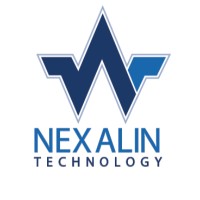- A crowdfunding initiative allows Columbus residents to invest in and co-own the historic Mount Vernon Plaza.
- Plans include renovated shops, new retail, affordable housing and support programs for local entrepreneurs.
- The minimum investment is $1,000, with a goal of raising $100,000 in public funds by Nov. 26.
Columbus residents have an opportunity to help revitalize and co-own a local historic shopping center through a crowdfunding initiative never before seen in Ohio.
Chicago TREND, a commercial real estate investment company based in its namesake city, recently launched a campaign with Columbus’ Mount Vernon Plaza that allows locals to invest in the project’s restoration. The shopping center, 1040-1060 Mount Vernon Ave., was once a premier retail destination in Columbus’ King-Lincoln Bronzeville neighborhood, following its ribbon-cutting by then-President Jimmy Carter in 1978.
But over the past 47 years, the shopping center has deteriorated into a sort of epicenter for drug and criminal activity, Chicago TREND CEO Lyneir Richardson said.
“Everyone has a story, it seems, of when Mount Vernon was thriving,” Richardson said. “They had their first date there, they went to the Cajun restaurant or they got their hair cut or the post office. And they’ve seen it decline over the last two or three decades.”
Sean Grant, chief financial and administrative officer for the Columbus Partnership, said this collaboration with Chicago TREND has been several years in the making. He and other city leaders were drawn to the idea of encouraging community ownership in areas where that representation is typically lacking.
By letting locals invest in the renovation of the shopping center, Richardson said not only will the community have a vested interest in “protecting” the space, but city and county leaders can see that Mount Vernon Plaza is a property worth funding.
With King-Lincoln Bronzeville being a historically Black neighborhood, Grant — who plans on investing himself — said the shopping center was once considered “the mecca of the Black economy.” He hopes this project will restore “local pride,” reverse decades of decline and help to close the racial wealth gap in the area.
“It’s truly a genuine wealth-creation apparatus for households that are often excluded from real estate ownership,” Grant said. “For them to have a say in ownership and feel like they can be a part of it, we’ll continue to build pride not only in the shopping plaza, but also in their community.”
Richardson said Chicago TREND’s vision for the new-and-improved Mount Vernon Plaza involves a reactivated public park, renovated plaza shops with national and local retailers, two new retail pad sites and a 47-unit, multifamily affordable housing building. The company also plans to create support programs for business owners and youth entrepreneurs.
“There’s a pizza shop that’s been there for 30 years; they want to stay. I talked to the owner of the hibachi restaurant; they want to stay,” Richardson said. “They just want to be in a better environment where there’s more retail activity, more vibrancy, more care and concern for property management.
“That’s what we’re able to do. That’s what’s going to make the neighborhood better.”
How you can ‘co-own’ Mount Vernon Plaza
The company’s goal is to raise $100,000 in public funds by Nov. 26, when the funding portal closes. As of Oct. 14, seven investors had raised $21,000, according to the project’s crowdfunding platform.
Investors, who can be from anywhere, must fund at least $1,000 to participate. There’s no limit on the amount an individual can invest, but the sum of all community-raised funds are capped at 49% of the project’s total equity, which is listed at around $1.83 million.
Chicago TREND, which plans to own the property for 10 years before selling it, projects a return on investment of over 200% — or roughly triple the original value — by the end of that decade. In other words, a $1,000 investment could return $3,299, according to the company’s calculations. Within that 10-year period, co-owners will also receive a portion of revenue generated from the property each year, with estimates available in the company’s budget calculations.
The company emphasized the risks of investing and likelihood for error in these estimates, encouraging those interested to review the terms independently with a financial adviser.
After making an investment, investors will attend quarterly virtual meetings, as well as an annual in-person session, to receive updates on the project’s status.
Chicago TREND plans to complete the property acquisition by Thanksgiving; obtain permits and start initial repairs at the beginning of 2026; open the first stores by the end of 2027; and be finished by September 2028 — 50 years after former President Carter’s ribbon-cutting ceremony.
Beyond the more immediate benefits of revitalizing a historic space and allowing residents to turn a profit in the process, Richardson said local ownership leaves an enduring mark on a community. By giving lower-income individuals a chance they may not usually get to learn about investing, that knowledge can be passed on to younger generations who could be one step ahead of their predecessors by the time they grow up.
“I now have young people, like 10 or 11, that are on the investor calls, asking questions,” Richardson said. “The kids are on a call asking a CEO, ‘What’s a rent roll? When do I get my return? Why can’t we have Chipotle instead of Taco Bell?’ They’re asking those questions, and that to me is the generational change.”
Though this partnership — the fourth of its kind for Chicago TREND — is the first for Ohio, Grant said he hopes this initiative will be “a catalyst” for future similar projects in the Columbus area.
“I’m just looking forward to the ongoing engagement here, whether you live in the community or not,” Grant said. “It’s going to be one of those projects you can always look back on and say, ‘We were part of that, and we did something.'”
Reporter Emma Wozniak can be reached at ewozniak@dispatch.com or @emma_wozniak_ on X, formerly known as Twitter.




